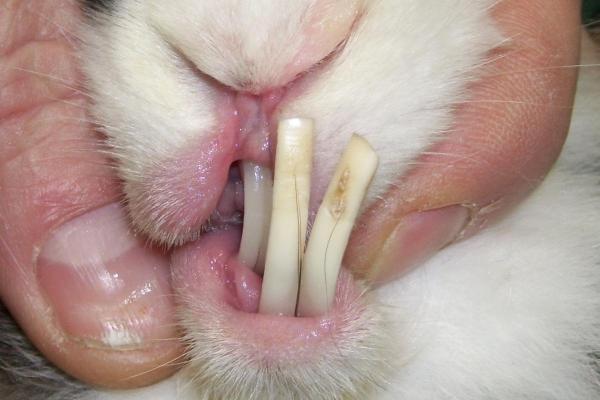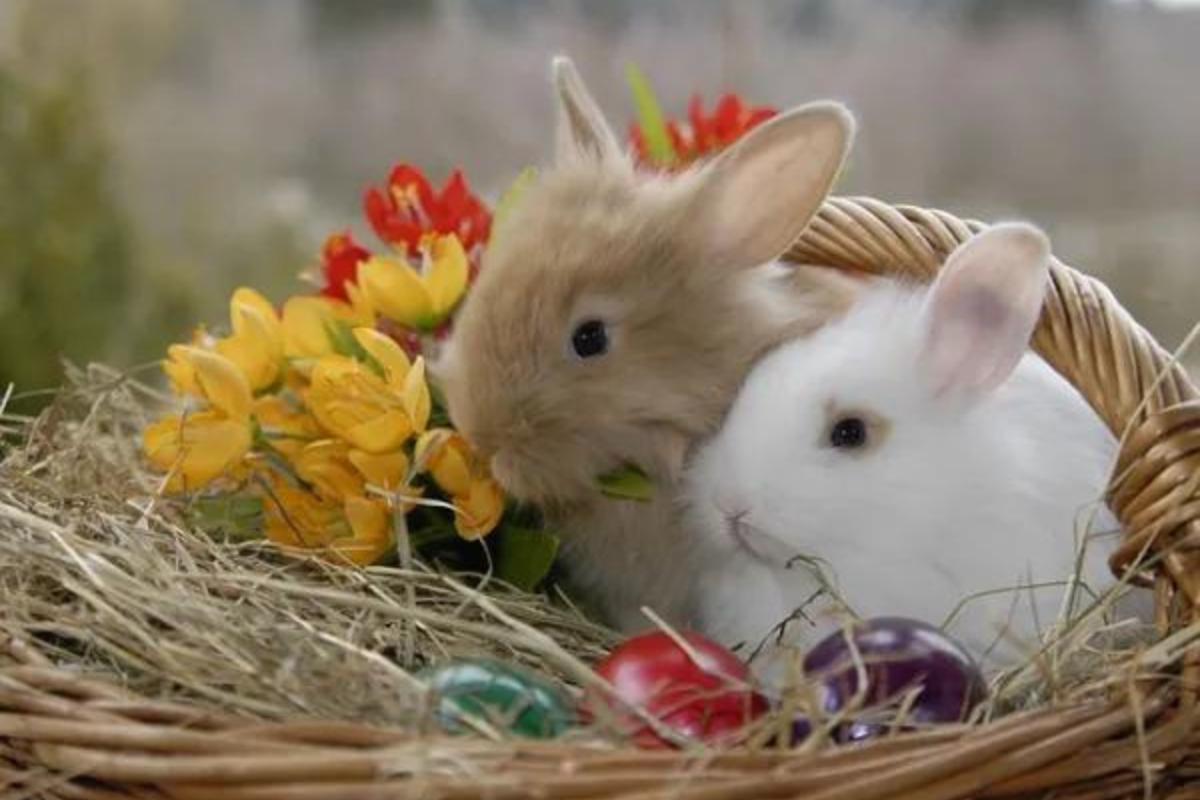How to Know How Old a Rabbit Is



See files for Rabbits
It is not uncommon for rabbit owners to not know the actual age of their rabbits. The truth is that this is not easy to determine. While there is no truly accurate method, there are a number of parameters that can be helpful in estimating how old your rabbit is. In addition to taking better care of your rabbit, knowing their age can help you anticipate their needs and have a better understanding of their behavior.
The following AnimalWised article explains how to know how old a rabbit is using different methods.
Average lifespan of rabbits
Unlike their wild relatives, which live an average of 1 to 2 years, domesticated rabbits can live between 8 and 10 years. As mentioned earlier, accurately determining the age of rabbits is a complicated task. However, knowing the general age categories can be a good way to start.
- Baby rabbit: up to 6 months old.
- Young rabbit: between 6 and 12 months old.
- Adult rabbit: between 1 year and 5 years old.
- Senior rabbit: more than 5 years old.
The reason it is so difficult to tell a rabbit's age is because they do not have any distinguishing marks or traits that change as the rabbit ages. Unlike many other animals, rabbits can look very, very similar during the different stages of their life.
If you have recently adopted a young rabbit, you might be interested in this other article, where we give you some tips on raising rabbits.
Rabbit to humans years
We can always compare the age of rabbits with human years to gain a better understanding of their age. Note, however, that this method is not entirely accurate. Factors such as size and breed also play a role. As a rule of thumb for rabbit life expectancy, the larger the rabbit, the shorter its life expectancy.
- 0-6 months: A rabbit that is six months old is equivalent to a human being that is 16 years old.
- 6-12 months: A rabbit that is 1 year old is equivalent to a human being that is 21 years old.
- One year-5 years: A rabbit that is 5 years old is equivalent to a human being that is 45 years old.
- 5-10 years: A rabbit that is 10 years old is equivalent to a human being that is 75 years old.
Hocks
One of the most reliable ways to determine a rabbit's age is to look closely at the condition of its hocks. Hocks are the heel on the bottom of a rabbit's foot.
- Young rabbits: Their hocks are usually covered with a soft and thick fur.
- Adult rabbits: As the rabbit gets older, the fur on its hocks becomes less dense and soft. In some cases, you may discover bald spots.
- Older rabbits: The hocks of older rabbits are likely to be hairless. The skin in this area looks worn and may even have some cracks.
This is caused by the animal's body weight pressing on the thin skin at the hocks, which causes the fur to be rubbed off and thick skin to form.
You must also consider other factors when determining the age of the rabbit based on the appearance of the hocks, such as:
- Weight: overweight rabbits tend to put more pressure on the hocks, which promotes the appearance of sores, even when the rabbit is young.
- Bedding: In cases where the bedding is not cleaned regularly and is often soaked in urine, the fur of the rabbit will eventually fall out.

Nails
Although it is somewhat less informative than the heels, the condition of the nails also helps us estimate the age of the rabbits.
- Young rabbits: they have short, fine and especially pointed nails.
- Adult and old rabbits: have longer, thicker and more yellowish nails.
Teeth
In some species, such as horses or dogs, it is possible to determine age quite accurately by the degree of wear of the teeth. In rabbits, this method is useless, as they are animals with continuous tooth growth. Nevertheless, there are certain parameters related to rabbits' teeth that can yield information about their age.
- Young rabbits: they usually have white, short and quite regular teeth.
- Adult and senior rabbits: Over time, the teeth take on a more yellowish color. In addition, inadequate nutrition often causes dental changes, such as overgrowth of incisors, misalignment of teeth, etc.
It is not uncommon for rabbits to suffer from a condition called malocclusion, which is the overgrowth of their teeth. If you want to know more about it, read this other article where we talk about abnormal growth of rabbit teeth.

General appearance
Factors such as the skin and the condition of the fur can also provide important information about how old a rabbit is.
- Young rabbit: Baby rabbits are born blind and deaf. However, once the rabbits are weaned from their mothers at about 1 month of age, they look like miniature versions of an adult rabbit.
- Adult rabbit: An adult rabbit is at the peak of its physical development and is likely to have a shiny, glossy coat, bright eyes, and a healthy weight.
- Senior rabbits: older rabbits, on the other hand, have tougher skin and rougher, duller fur. It is also common for older rabbits to groom themselves less frequently.
If you notice that your rabbit is losing fur, this could be a cause for concern. Continue reading this other article to learn the possible reasons your rabbit is losing fur.

Size
Since rabbits are very fast-growing animals, especially when they are young, their growth rate can also help us determine their age. The first thing you need to know is how big your rabbit should be when full-grown, as this can vary greatly by breed.
Then you need to find a way to determine if your rabbit is growing and how fast. You can either take weekly photos of your rabbit and place the same object next to it for reference. You can also try weighing your rabbit with a household scale, also on a weekly basis.
- Young rabbits: Rabbits that are less than 6 months old grow very quickly and the changes in their size and weight will be very noticeable. Once they are six months old, their growth rate will begin to decrease.
- Adult rabbits: After the first year has passed, the rabbit has reached its adult size and from now on it is very likely that its height and weight will remain the same.
- Senior rabbits: You can expect older rabbits to weigh a little less after age 5 than they did at age 1 or 2. The reason for this is that older rabbits rest most of the time and eat less.
When do rabbits stop growing?
On average, rabbits grow until they are 1 year old. However, the breed of rabbit is also a determining factor, as larger breeds tend to continue growing until 14 months of age.
Sexual maturity plays a big role in the growth rate of a rabbit. If you want to learn more about how rabbits reproduce, read this other article, where we explain how rabbits mate.

Activity level and behavior
The behavior and activity level of rabbits also changes with age and can help us greatly in knowing how old a rabbit is.
- Baby and young rabbits: Young rabbits are especially active and playful. They can even be difficult to pet. At 4 to 6 months of age, rabbits begin to produce reproductive hormones that can change their behavior. They usually show more interest in the opposite sex and even get into fights with rabbits of the same sex.
- Adult rabbits: they tend to be alert, interactive, and curious about their surroundings. Once they reach sexual maturity, they can become aggressive towards their owner and other animals. They may also dig, bite, nibble on objects, spray urine or ride other rabbits.
- Senior rabbits: Older rabbits tend to spend most of the day at rest. They lose agility and their movements become slower. They are also less interested in exploring their environment. In some cases, older rabbits can become hostile. They may also show signs of poor vision and hearing. When they do move, they frequently appear rigid and do so in an odd manner, maybe shuffling as opposed to bouncing.
As mentioned earlier, aggression is a common trait in rabbits once they reach sexual maturity. If you want to learn more about how to deal with aggression in rabbits, do not miss this other article, where we explain the causes of rabbit aggression.
If you want to read similar articles to How to Know How Old a Rabbit Is, we recommend you visit our Facts about the animal kingdom category.









